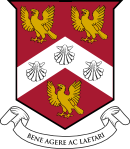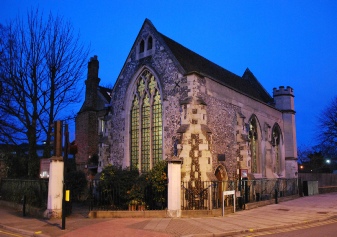


Kingston upon Thames
The Royal Borough of Kingston upon Thames has a long history. It is one of only three Royal Boroughs in England and has a Coronation Stone on which, it is reputed, seven Saxon kings were crowned in the tenth century.
The History of the Chapel
 In 1309 Edward Lovekyn, a member of an old Kingston family and Bailiff of the Borough, received Letters Patent from Edward II to found a Chantry Chapel, and it was consecrated in 1310. Edward Lovekyn died the next year and the Chapel fell into decay.
In 1309 Edward Lovekyn, a member of an old Kingston family and Bailiff of the Borough, received Letters Patent from Edward II to found a Chantry Chapel, and it was consecrated in 1310. Edward Lovekyn died the next year and the Chapel fell into decay.
In 1352, however, Edward’s son John received Royal consent to re-
The names of both Lovekyn and Walworth are commemorated in the names of two of the Kingston Grammar School Houses.
In 1880 the Chapel again needed restoration but was saved from destruction by public subscriptions and the co-
The Chapel is very much part of the School’s facilities, and is currently used for music teaching.